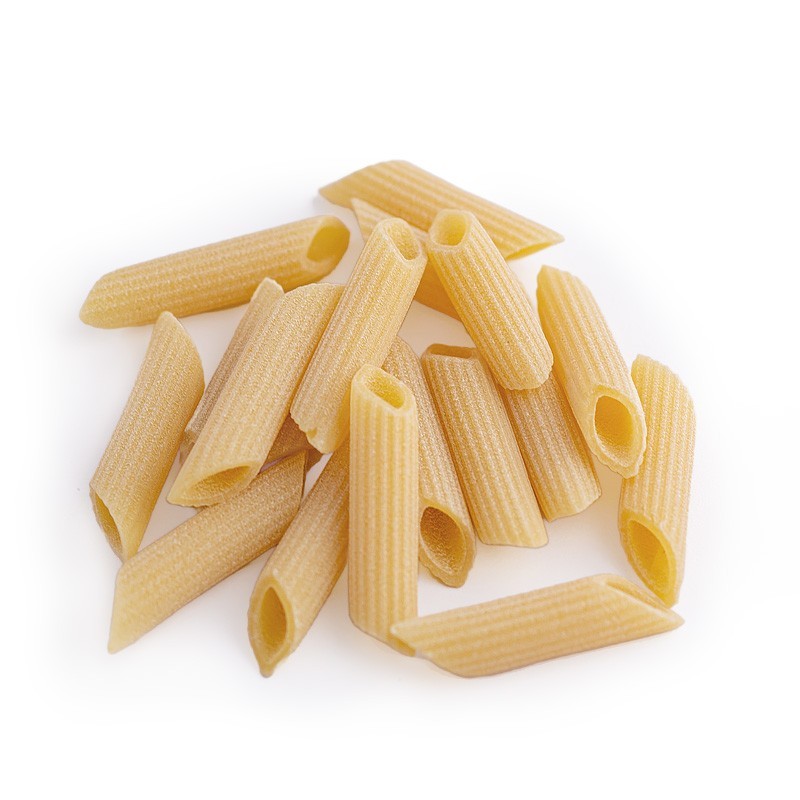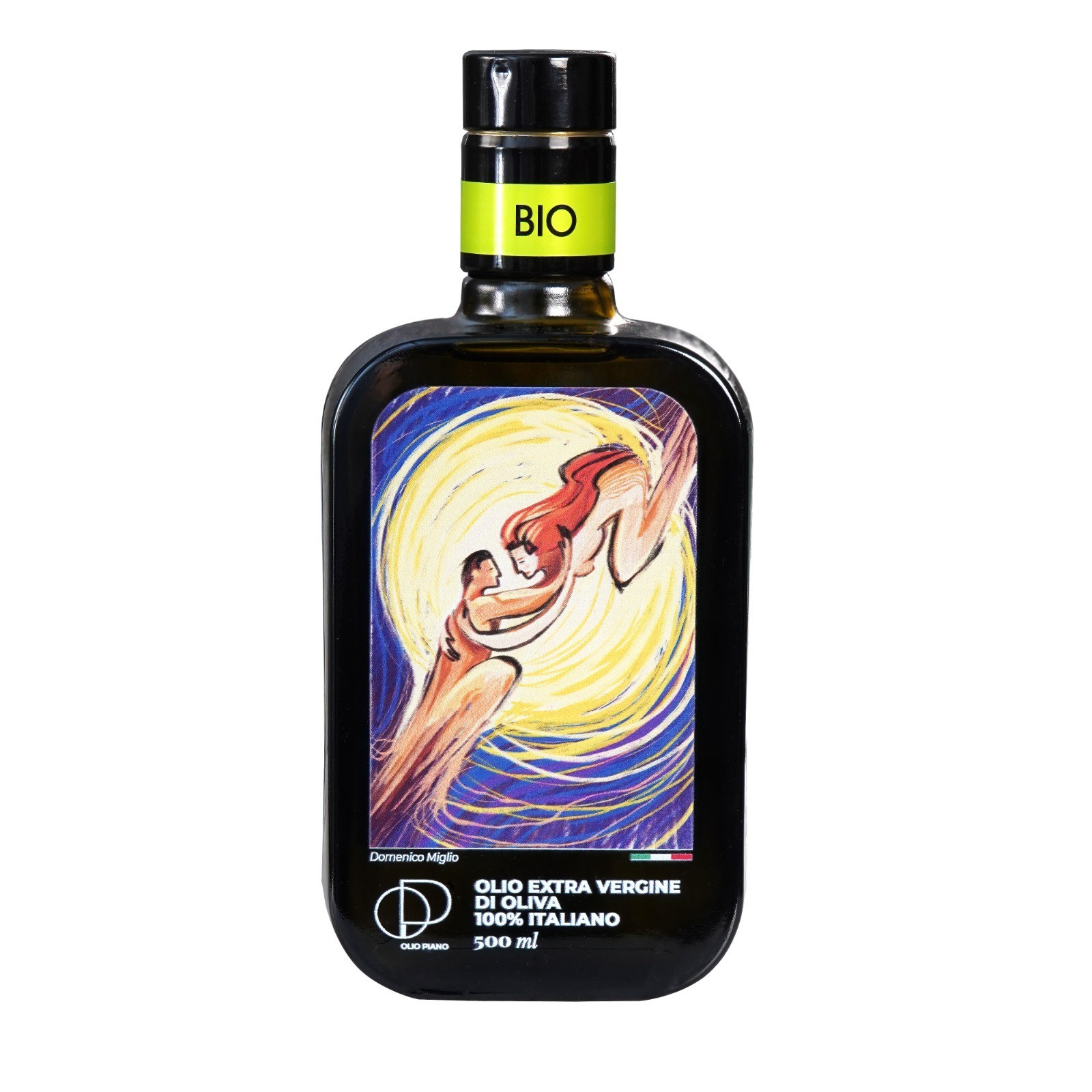24-11-2023
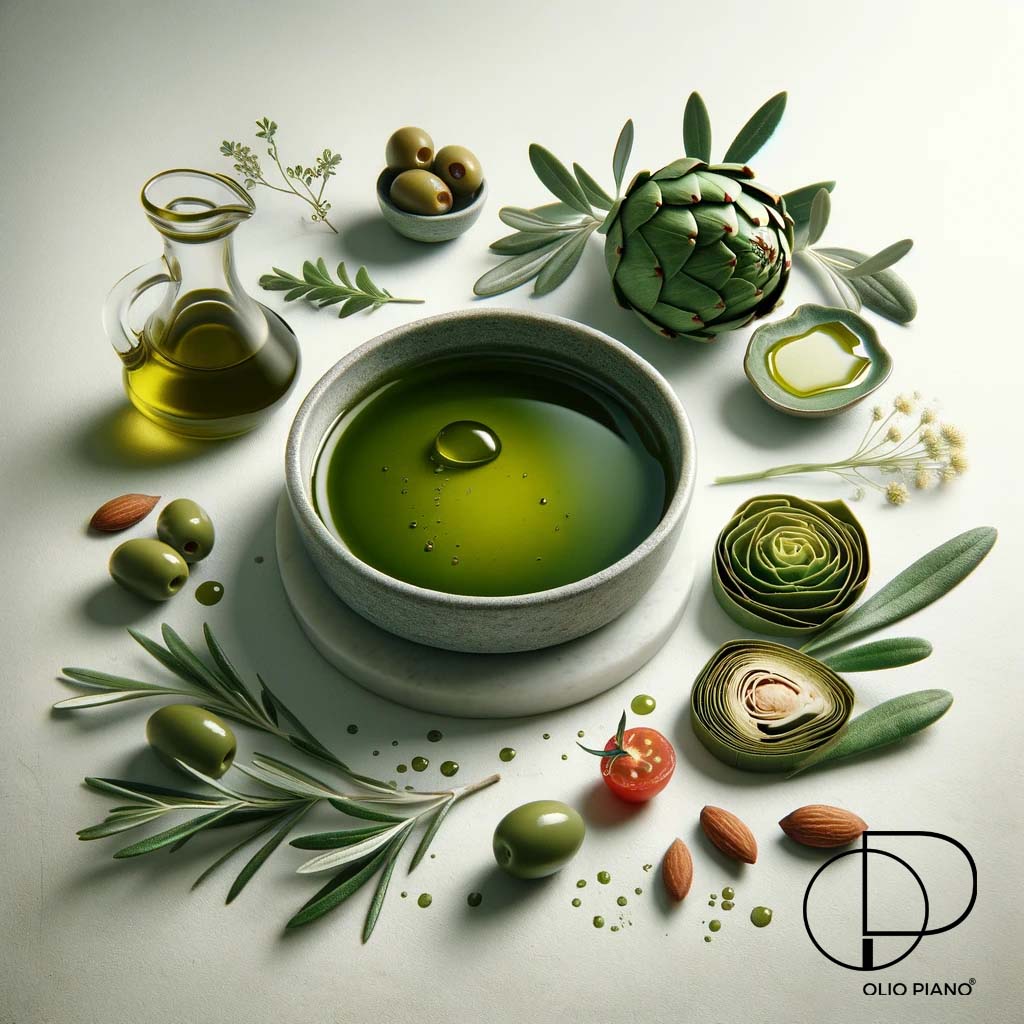
Sensory Profile of Peranzana Extra Virgin Olive Oil: A Detailed Analysis
Discover how the unique sensory profile of Peranzana extra virgin olive oil determines its superior quality. This oil, famous for its balance and aromaticity, owes its excellence to two key components: the volatile and phenolic fractions.
Cultivar and Oil Quality: The Role of the Phenolic and Sensory Profile
Each olive variety, or cultivar, contributes to a distinct phenolic and sensory profile in the oil it produces. For Peranzana oil, this means a taste and aroma that vary significantly depending on the specific cultivar used.
What is Sensory Analysis and Why is it Essential in Olive Oil?
Sensory analysis, a cornerstone in evaluating the quality of olive oil, uses our senses – sight, hearing, smell, taste, and touch – to identify and assess the organoleptic attributes of a product. This scientific method, enriched by the use of statistics, is crucial for fully understanding the unique characteristics of Peranzana extra virgin olive oil.
The Panel Test in Olive Oil Sensory Analysis: A Detailed Process
Definition and Importance of the Panel Test in Olive Oil
The Panel Test represents a fundamental aspect in evaluating the sensory characteristics of olive oil. This analytical procedure is performed by a panel of trained tasters, who work together to objectively and independently assess the organoleptic qualities of an oil. This method ensures a reliable and standardized judgment on the different varieties of oil.
Panel Test Methodology: From Smell to Taste
In the Panel Test, tasters follow a strict protocol that begins with an olfactory tasting, then proceeding to tasting. Each taster receives a numbered and sealed glass, prepared by the panel leader. Removing the cap, the taster first evaluates the olfactory characteristics of the oil, identifying both positive and negative notes. Subsequently, the tasting assesses taste and texture.
In-Depth Exploration of the Sensory Characteristics of Peranzana Olive Oil
Peranzana olive oil is renowned for its distinctive and rich sensory profile. On closer analysis, we discover:
- Medium Intensity of Fruitiness: This oil has a medium fruity aroma, evoking the freshness of freshly picked olives. This fruity note is delicately balanced, neither too overpowering nor too subtle, offering a pleasant scent reminiscent of the autumn harvest.
- Balance between Bitterness and Spiciness: In this oil, bitterness and spiciness blend in a harmonious balance. The bitterness is subtle but present, reminiscent of the natural vivacity of green olives, while the spiciness gradually emerges, adding depth and complexity to the taste without overpowering the other flavors.
- Range of Aromas: Peranzana stands out for a variety of aromatic notes that combine to create a unique bouquet. These include:
- Grass/Leaf: A herbaceous freshness reminiscent of green fields and lush gardens.
- Artichoke: A subtle vegetable note that adds an earthy and natural dimension.
- Tomato: A hint of sweetness and acidity, evoking images of ripe tomatoes under the Mediterranean sun.
- Fresh Almond: A touch of mild sweetness and a creamy texture, rounding out the overall profile.
- Color and Fluidity: Visually, Peranzana oil presents with a vibrant green color with yellow reflections, suggesting freshness and vitality. Its medium fluidity ensures a pleasant mouthfeel, neither too light nor too dense, but perfectly balanced to enhance the flavors.
Overview of the Average Organoleptic Profile of Oil
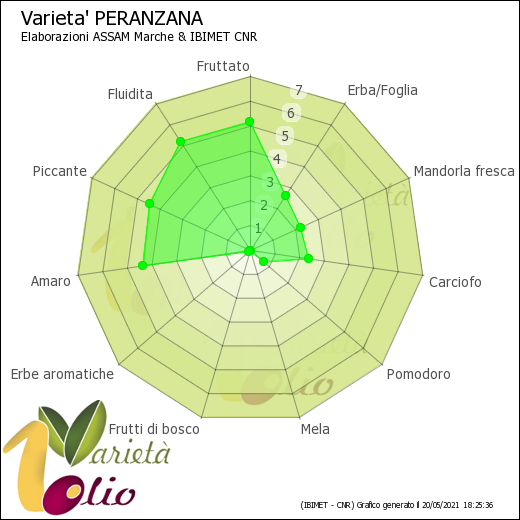
Average Organoleptic Profile: Detailed Analysis with 95% Confidence Limits
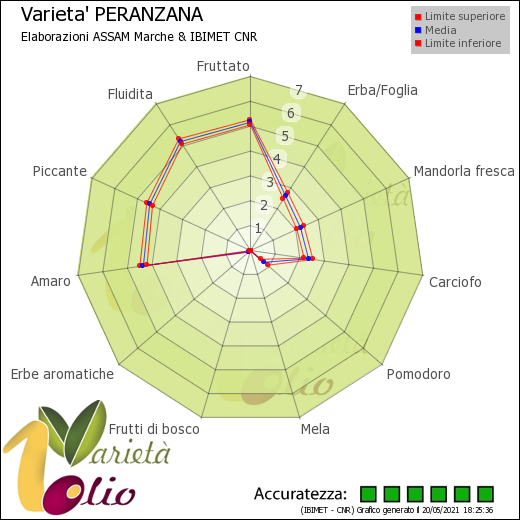
Details on the Acidic Composition of Oil
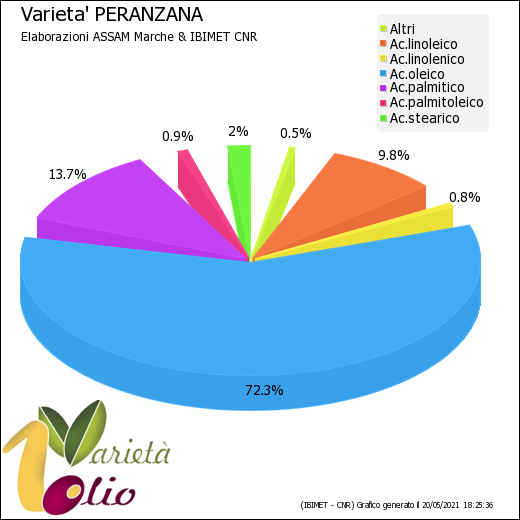
Scoprite l'Eccellenza del Nostro Olio Extravergine da Mono Cultivar Peranzana Biologico









